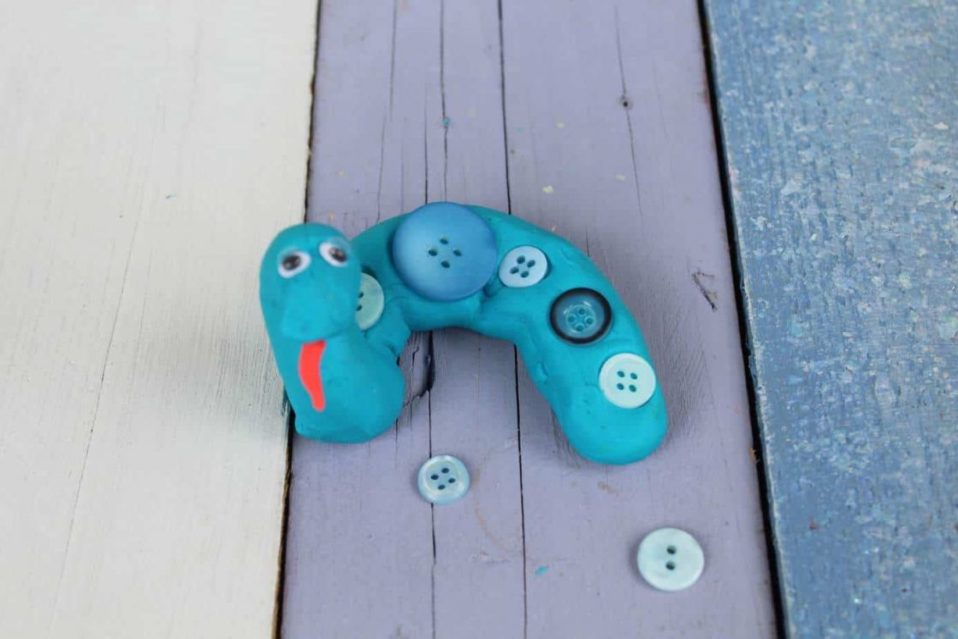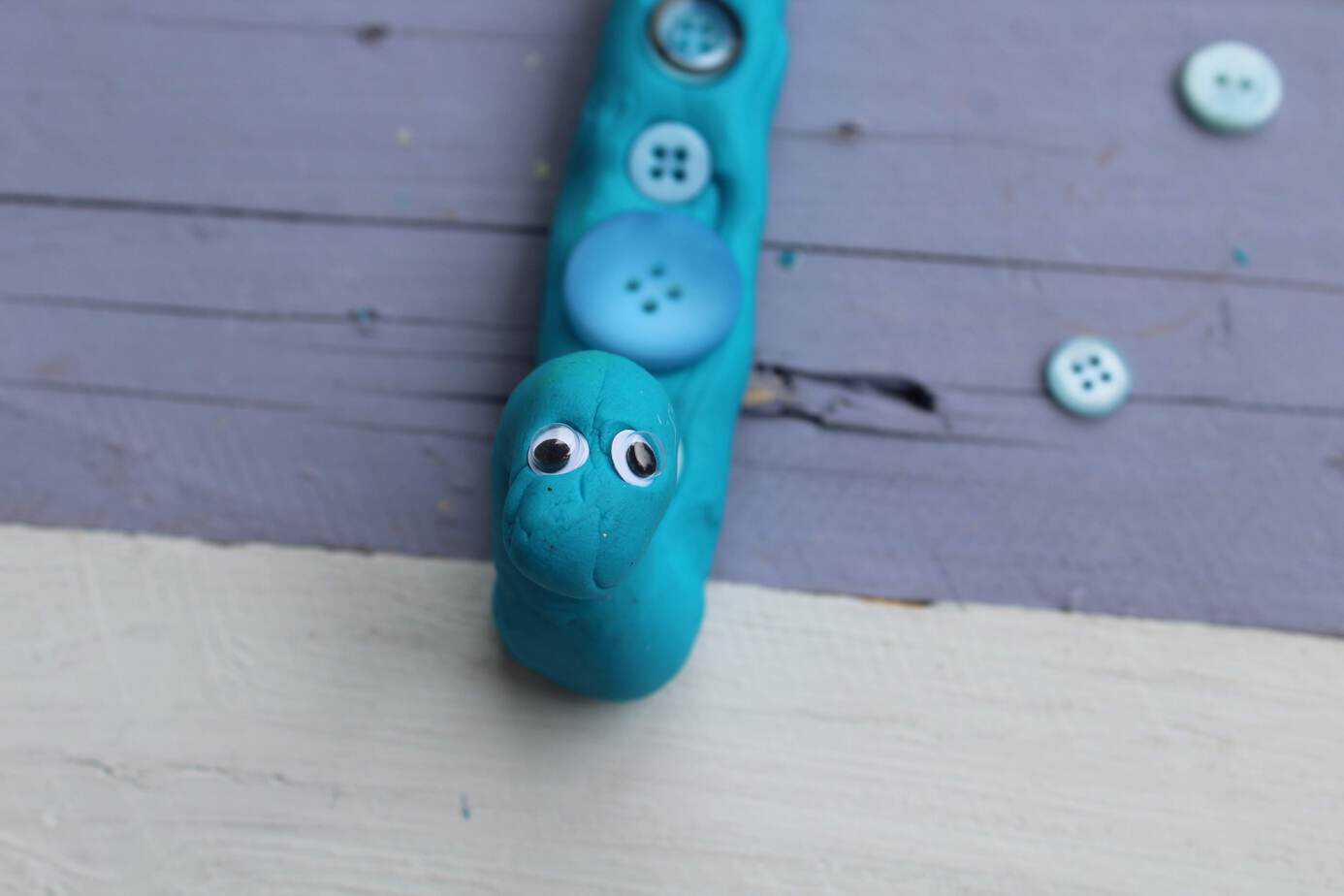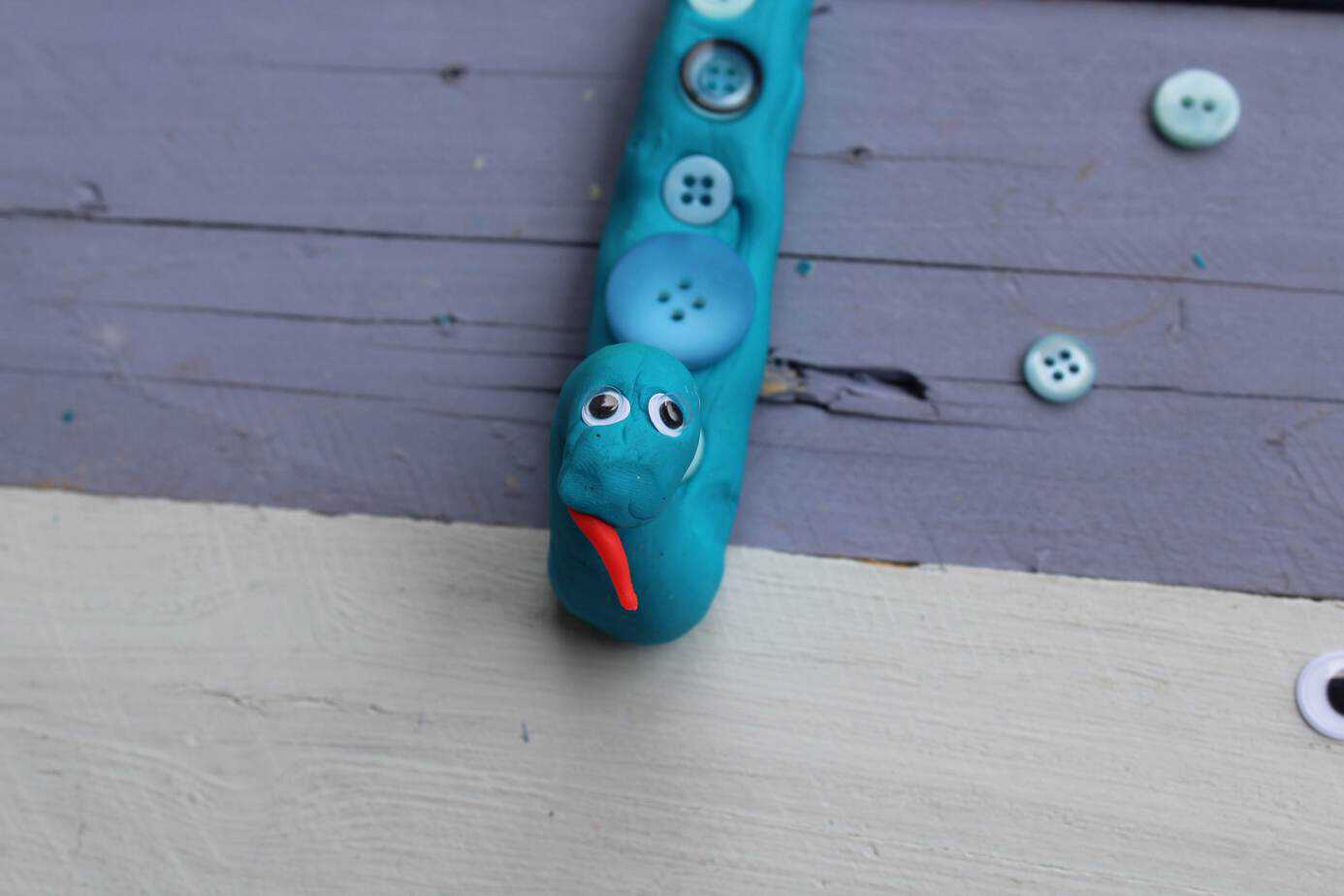This play-doh snake learning moments post was created in response to what I like to call the “Now what the heck are we supposed to do?” block.
You know what I’m talking about. You have an hour or so until you have to leave the house, your voice is hoarse from reading aloud, and you have no desire what so ever to pull out a toy or a game that will take forever to put away again. Not to mention the inevitable moments of “time to put it away now” followed by “but moooooooooooom I’m playing.”
So, just for you.
I have put together a simple Play-doh snake activity with some learning moment prompts sprinkled throughout. This way you can make the Play-doh snake games as simple or as complex as you like.
Supplies
- Play-doh
- A variety of buttons
- Craft eyes – or something you can use as eyes.
Directions
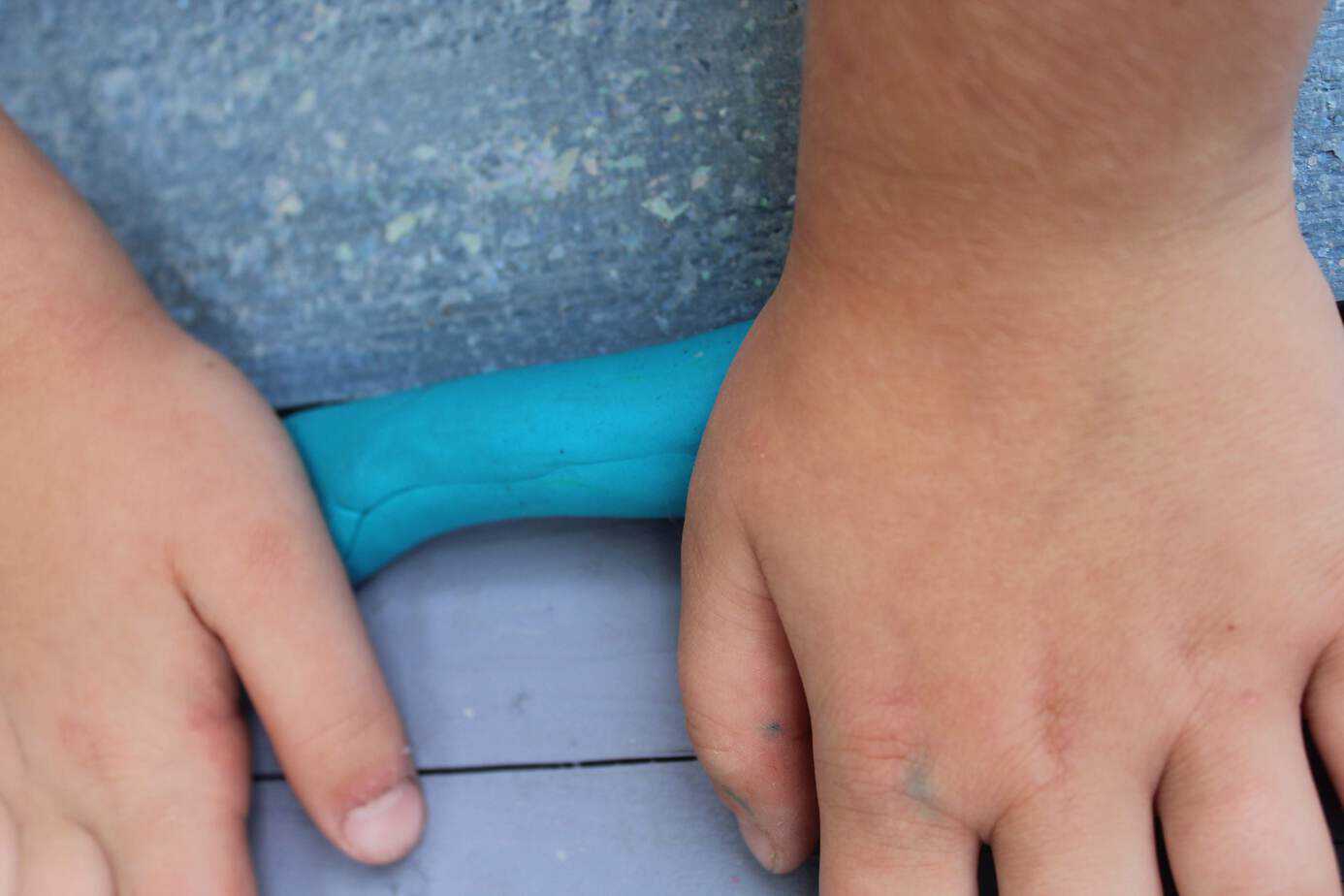

Get your little one to roll out a tub of play-doh out into the shape of a snake.
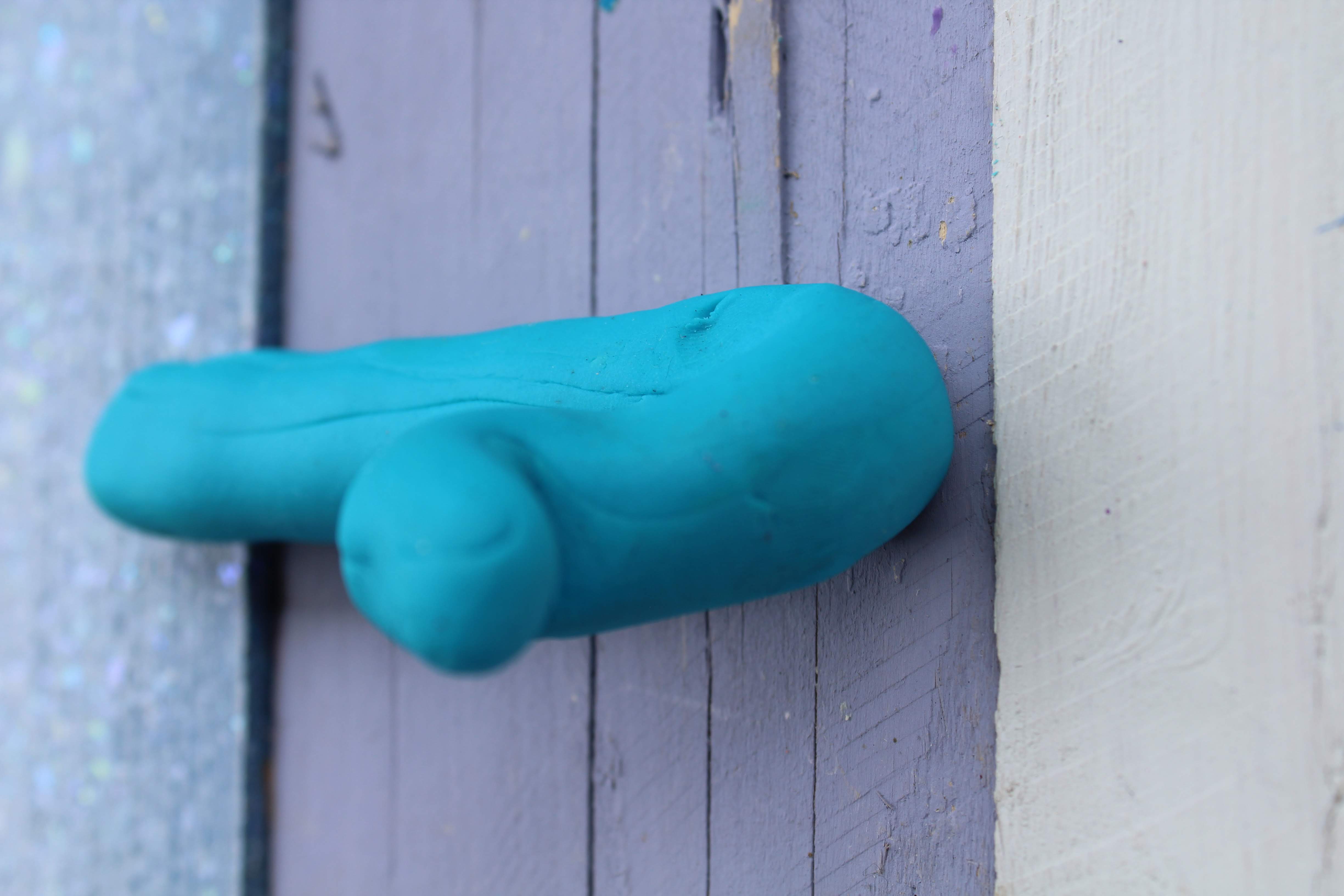

Now encourage your child to bend one end upwards to form the head.
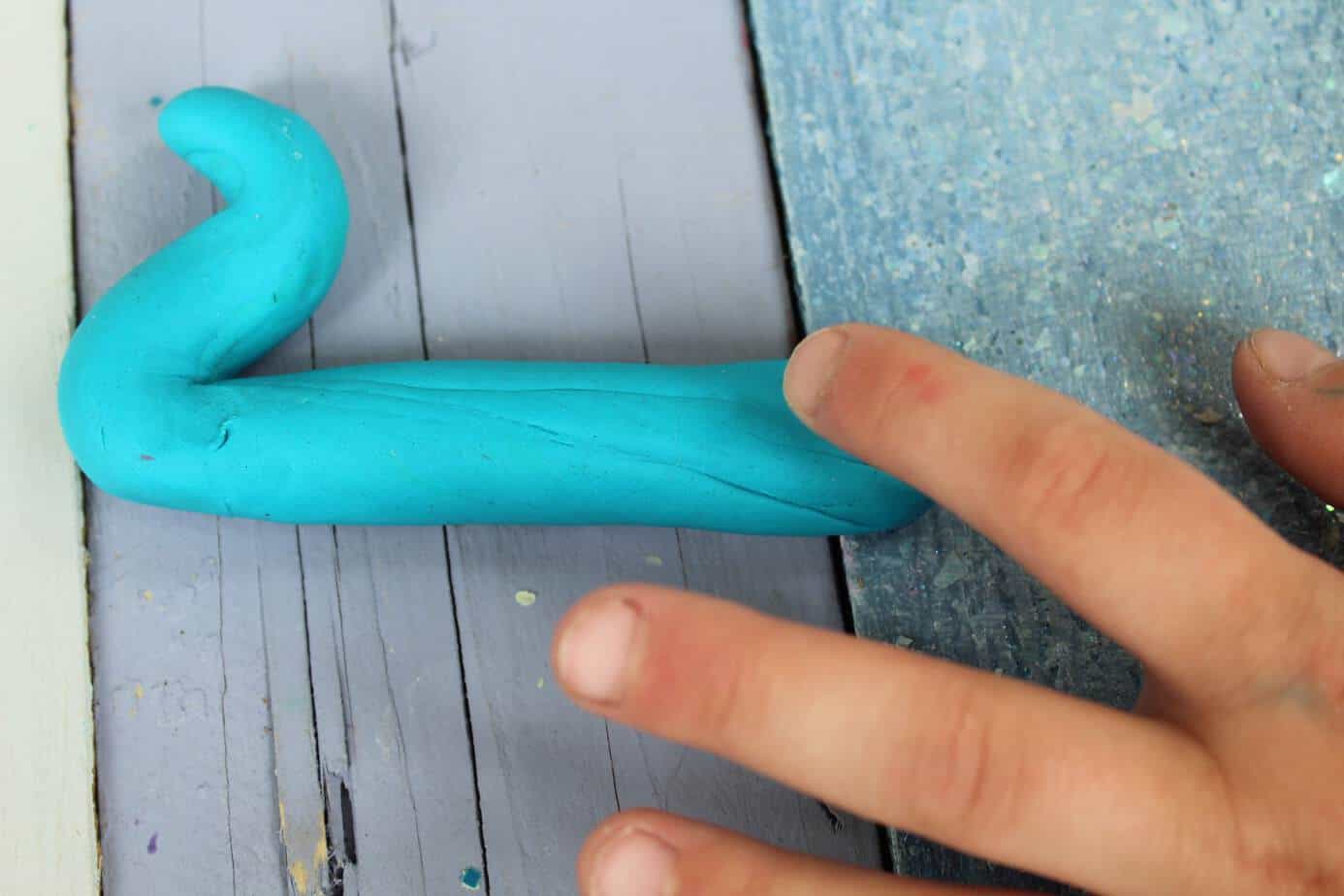

Then have them latten the other end a little. This will keep the snake fairly upright and hopefully minimise frustration caused by a snake that keeps falling over.
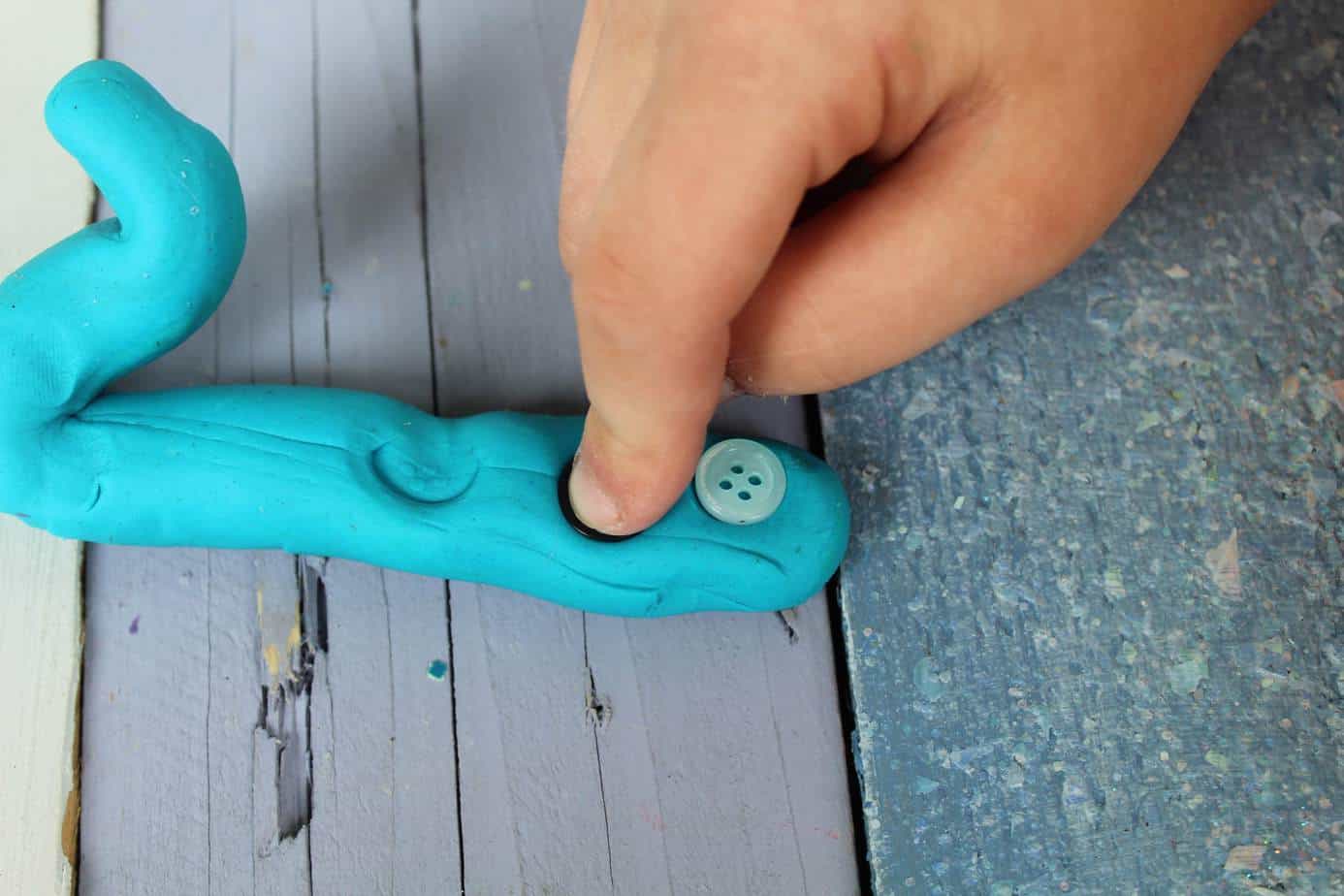

Offer your child an assortment of buttons to decorate their snake with and encourage your child to push the buttons into the play-doh.
Play-Doh Snake Learning Moment #1
Instead of providing only one colour or style of button, pour out a pile of buttons of different colours and sizes. Then:
- Ask your little one to use buttons of just one colour on their snake.
- Have your child sort the buttons according to size.
- Get your the kiddo to push the size sorted buttons into the snake in ascending or descending order.
- Begin a simple pattern with the buttons and ask your child to continue or complete the pattern.
and now, back to the play-doh snake…..
Add a few craft eyes to the head of the snake and add a thin sliver of play-doh for the tongue.
Play-Doh Snake Learning Moment #2
Share a few snake facts with your little one. They do not have to be overly complex, for example:
- Snakes do not taste with their tongue. Instead, they have a taste sensor on the roof of their mouth. The snake flicks their tongue about in the air to “catch” scents and pull them back into their mouth to hit the taste sensor.
- Look closely and you’ll notice snakes don’t have eye-lids
- Snakes do not chew their food nor do they eat dead animals. Instead, they eat live prey, which they catch and swallow whole.
- Many people think snakes are slimy but they are not. Snakes have smooth, dry, scaly skin
For more snake facts visit dkfindout.com They are an excellent free resource with lots of clear photos and easy to digest information.
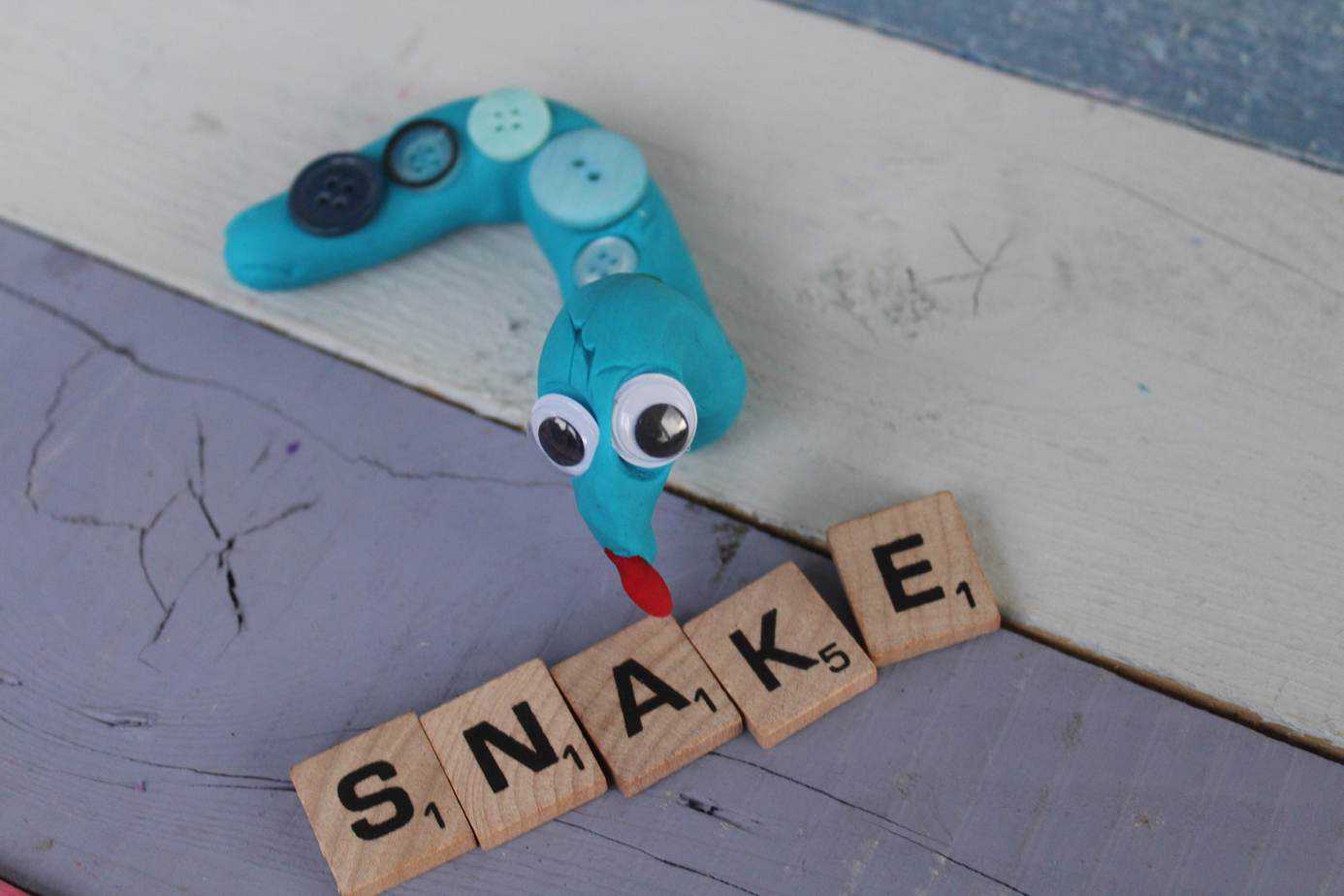

For an older child, you can use Scrabble tiles to spell the word snake and then build other animal words. Then you can make play-doh versions of those animals and enjoy these activities all over again.
Play-doh Snakes Learning Moment #3
- Let your child’s imagination slither away as they create new snakes and give them personalities.
- Encourage your little one to create stories with their snakes at the centre of the action.
- Create short videos of your “Snake Tales” and when you watch them at a later date you can revisit all you learned about snakes the first time.


